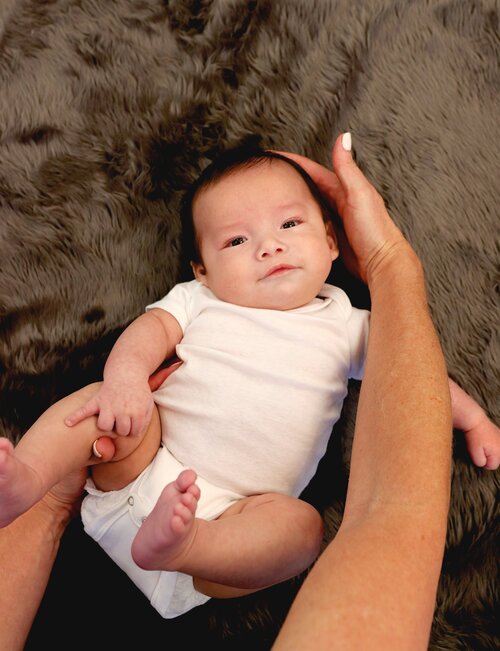It seems many people have heard of torticollis because of a niece or cousin that developed the condition. However, it’s causes and symptoms are not always clear. Let’s answer the question – what is torticollis, or “tight neck”?
- Torticollis is a rather common occurrence. 85% of the babies treated with head bands were identified as having torticollis. There is certainly a direct correlation.
- There has been an increase in torticollis because of the “Back to Sleep Campaign.”
- It comes in varying degrees of severity. It can be anywhere from a mild neck muscle imbalance to a mass that is actually in the muscle itself. Even a slight tightness can cause significant skull flattening.
- The SCM (sternocleidomastoid) muscle is the main muscle affected but can also include several different muscles in the neck and shoulder region.
- Tightening in these muscles causes the baby to tilt their head in one direction and rotate their head in the opposite direction. Coming out of this position is very difficult for the infant. Tightening in the left SCM is the most common.
- Treating torticollis takes patience and consistency. It can worsen during growth spurts or teething or when the baby is tired. Daily activities and stretches are very important. It is also critical to work with a physical or occupational therapist that has experience in this area.
- Other long term effects such as developmental delays with motor skills, atypical movement patterns and even scoliosis have been documented.

